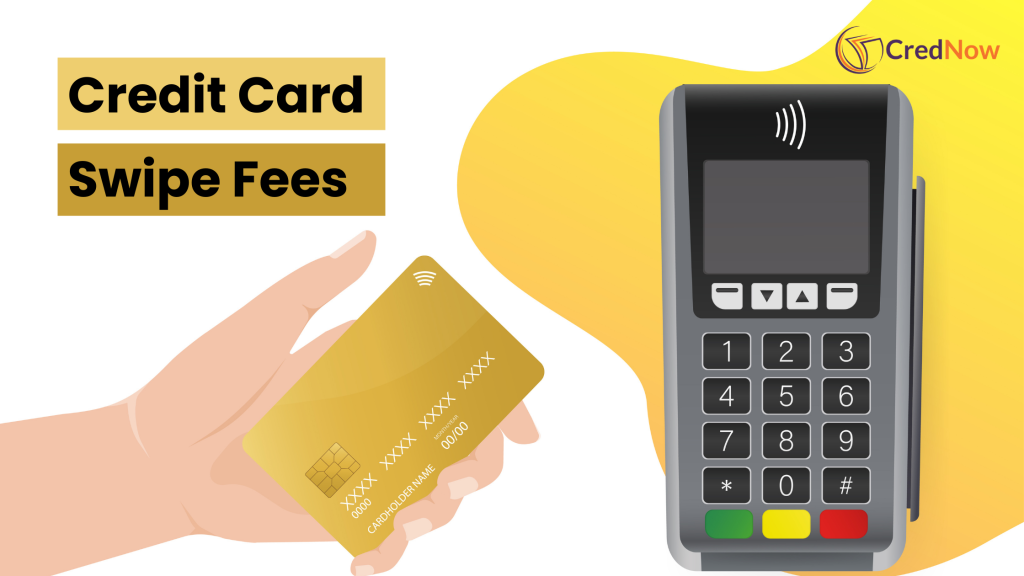Meet Ananya, a 32-year-old businesswoman in Delhi who owns a boutique. Over the past few months, she noticed that an increasing number of her customers prefer to pay with credit cards rather than cash. While credit card payments made things more convenient for her customers, Ananya was puzzled by something—every time a customer swiped their card, a small fee was deducted from her total sale. Curious about where this fee was going and why it existed, she began researching what are credit card swipe charges and how they impact businesses like hers.
In this blog, we’ll explore what are credit card swipe charges, how they work in India, and why they’re important for both consumers and businesses. By the end of this guide, you’ll have a clear understanding of these charges and how they fit into the digital payment ecosystem.
What are credit card swipe charges?
In simple terms, credit card swipe charges (also known as Merchant Discount Rate or MDR) are the fees that a business pays every time a customer makes a payment using a credit card. This charge is typically a percentage of the total transaction amount and is paid by the merchant, not the customer. These fees cover the cost of processing the payment, which involves multiple parties, including the bank that issued the card, the payment processor, and the card network (like Visa, Mastercard, or Rupay).
In Ananya’s case, whenever a customer swipes their credit card at her boutique, her point-of-sale (POS) machine processes the transaction, and a small fee is deducted from the sale. This fee is her credit card swipe charge, which goes toward maintaining the payment infrastructure.
How do credit card swipe charges work in India?
Now that we know what are credit card swipe charges, let’s dive deeper into how they work in the Indian context.
1. Breakdown of Credit Card Swipe Charges
In India, credit card swipe charges typically range from 1% to 3% of the total transaction amount, depending on several factors like the type of business, the card network, and the bank involved. Let’s break this down:
- For example: If a customer buys clothes worth ₹5,000 at Ananya’s boutique using their credit card, and the swipe charge is 2%, Ananya will receive ₹4,900 while ₹100 goes toward the swipe fee.
The total swipe charge is distributed among several entities:
- Issuing Bank: This is the bank that issued the credit card to the customer. They take a portion of the swipe fee.
- Card Network: Visa, Mastercard, or Rupay charge a small fee for facilitating the payment.
- Payment Processor: The payment gateway or POS machine provider that processes the transaction also receives a part of the fee.
2. Why Do Businesses Pay Swipe Charges?
When Ananya accepts credit card payments, she’s essentially paying for the convenience of providing cashless payment options to her customers. These fees ensure that all the players involved in the transaction (the issuing bank, card network, and payment processor) get compensated for their role in processing the payment.
For example, the card network (like Visa or Mastercard) ensures secure and reliable communication between the bank, payment processor, and merchant. The payment processor (such as a POS machine provider) handles the technical infrastructure needed to process the payment.
3. MDR Caps for Small Businesses in India
The Reserve Bank of India (RBI) has introduced certain caps on MDR (Merchant Discount Rate) for small businesses and transactions under a certain value. For example, if the transaction is done via a debit card and is below ₹2,000, the MDR is capped at a lower percentage, usually around 0.4% to 0.9%.
For businesses like Ananya’s, this cap can be beneficial for transactions under ₹2,000, helping reduce the impact of swipe charges on smaller transactions.
Why are credit card swipe charges important?
- Encouraging Digital Payments
India is moving towards becoming a cashless economy, and accepting credit cards is a key part of that transition. Credit card swipe charges enable businesses to accept payments electronically, which in turn encourages more people to make digital transactions. For Ananya, offering the option to pay by card means she’s attracting more customers who prefer cashless payments.
- Cost of Providing Payment Flexibility
When a business accepts credit cards, they are offering customers the flexibility to pay with the method that suits them best. However, this flexibility comes at a cost. The swipe charge is essentially the fee businesses like Ananya’s pay for the convenience of offering credit card payments.
- Security and Reliability
Credit card networks and payment processors ensure that every transaction is secure, encrypted, and processed efficiently. The swipe charge helps fund this technology and maintain the infrastructure that keeps these payments safe and reliable.
Credit card swipe charges for consumers
While merchants like Ananya bear the cost of credit card swipe charges, it’s important for consumers to understand that they typically do not pay these fees directly. However, some businesses may choose to pass these charges on to customers, especially for smaller transactions.
For instance, Ananya may decide to add a small surcharge (such as ₹20 or ₹30) on credit card transactions under ₹500 to cover the cost of swipe charges. However, this practice is not common in larger, more established businesses.
Recommend Read: Credit Cards in the digital finance age
How to minimize credit card swipe charges
For business owners like Ananya, it’s crucial to find ways to minimize the impact of swipe charges on their profits. Here are a few strategies:
- Negotiate with Banks or Payment Processors
Many banks or payment gateway providers are willing to negotiate swipe charges, especially for businesses that process a high volume of transactions. Ananya could approach her bank and request a lower MDR based on her monthly sales. - Consider Digital Payment Platforms
Some digital payment platforms, such as UPI-based apps, offer lower transaction fees compared to credit card swipe charges. While UPI transactions don’t involve swipe charges, it’s important to consider that many customers still prefer the convenience and rewards of using credit cards. - Offer Incentives for Cash Payments
Ananya could offer a small discount to customers who pay in cash. This helps reduce her exposure to swipe charges while still providing an incentive for customers to shop at her boutique. - Review Payment Provider Options
Different payment processors offer varying swipe charge rates. Ananya could explore different providers to find one that offers competitive rates for her business.
In Conclusion
Understanding what are merchant discount rate is essential for both business owners and consumers. For merchants like Ananya, these charges represent the cost of offering convenient, cashless payment options. By being aware of how these fees work and exploring ways to minimize them, businesses can continue to grow in a cashless economy while ensuring that the cost of processing credit card payments doesn’t eat into their profits.
FAQs
- What are credit card swipe charges?
Credit card swipe charges, also known as Merchant Discount Rate (MDR), are fees paid by merchants every time a customer uses a credit card for a transaction. These charges typically range from 1% to 3% of the transaction amount. - Who pays the merchant discount rate in India?
The merchant (business owner) pays the swipe charge. Consumers do not directly pay these fees, though some businesses may add a surcharge to cover the cost of processing credit card payments. - Can I negotiate Card processing fees with my bank?
Yes, many banks and payment processors are open to negotiating swipe charge rates, especially if you process a large volume of credit card transactions. - Are there caps on Card processing fees in India?
The RBI has set caps on MDR for certain transactions, especially for debit cards and smaller-value transactions, to encourage digital payments and reduce costs for small businesses. - How can I minimize Card processing fees as a business owner?
Business owners can negotiate lower swipe charge rates, offer discounts for cash payments, or explore other digital payment methods like UPI that have lower or no fees.




